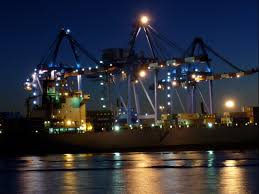Karan Rambhia, Logistics Supply Chain Specialist, Green Earth, explores how scalable strategies, smart collaboration, and sector-specific innovations can accelerate the shift toward sustainable logistics without burdening businesses or compromising operational efficiency and reliability.

Start small; every sustainable step builds momentum toward long-term change
While geopolitical instability garners attention, Karan Rambhia believes the real challenge in greening logistics lies deeper: infrastructure gaps, safety concerns, and high transition costs. Many regions lack fuelling stations for clean energy or facilities to support emerging green technologies. Even when solutions exist, upfront investment is often too steep for widespread adoption. Rambhia emphasises that public and private stakeholders must collaborate to create scalable, affordable systems that can be deployed across diverse geographies, making sustainable logistics a global norm rather than a luxury or afterthought.
Reverse innovation
Among green technologies, Rambhia highlights reverse logistics as a game-changer. By enabling smarter returns, refurbishment, and recycling, companies not only cut waste but also unlock value from previously discarded goods. He adds that small businesses don’t need deep pockets to make a difference. Simple shifts, like digitising documents, choosing eco-friendly packaging, or embracing multimodal transport, can slash emissions without straining resources. These practical, accessible actions set the stage for long-term environmental impact, resource efficiency, and business resilience.
Cost alignment
Balancing environmental responsibility with cost efficiency requires what Rambhia calls “logistics logic.” That starts with partnering locally and consolidating shipments for fuller truckloads, which reduce fuel consumption and improve margins. Route optimisation and efficient warehousing also add up over time. Phasing in electric or hybrid vehicles doesn’t have to be all or nothing; what matters is starting somewhere. Data-driven decision-making enables companies to meet both sustainability benchmarks and bottom-line goals, gradually turning eco-initiatives into business advantages and future-ready strategies.
Policy support
Governments have a critical role to play, Rambhia asserts, not just through regulation but through enablement. This includes investing in green freight infrastructure, like EV charging networks and clean fuel corridors, as well as offering targeted subsidies. A clear and predictable policy framework, including carbon pricing and emissions standards, helps level the playing field. Public-private partnerships are especially important for de-risking early investments and encouraging broader adoption of sustainable practices in logistics across both urban and rural supply networks.
Modal momentum
According to Rambhia, rail transport is leading the sustainability race thanks to its lower emissions and wide connectivity. However, he sees untapped opportunity in coastal and inland waterways, which remain vastly underutilised. These modes could offer efficient, low-carbon alternatives for last-mile delivery, especially in regions with dense trade networks. Shifting focus toward such modes could significantly reduce the logistics sector’s environmental footprint and rebalance modal share toward cleaner, smarter transport options.
Action forward
For Rambhia, the message is clear: sustainable logistics is within reach. With the right mix of innovation, intention, and support, even small changes can create ripple effects. The time for action is now—deliberate, inclusive, and sustained.











